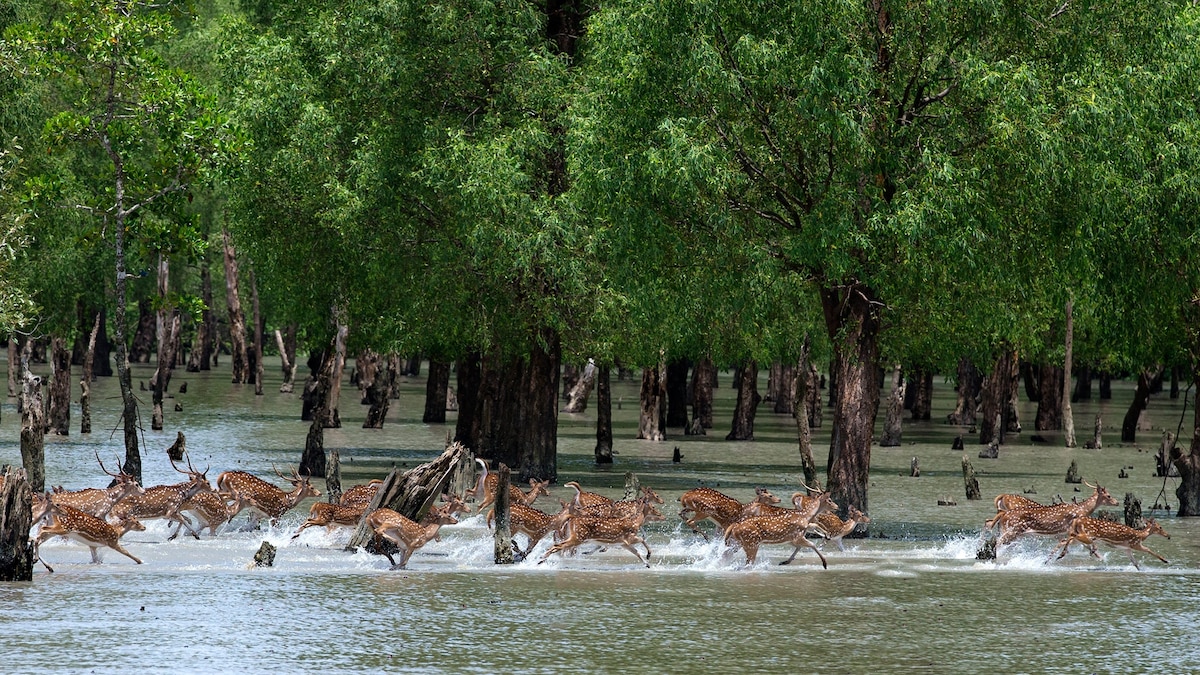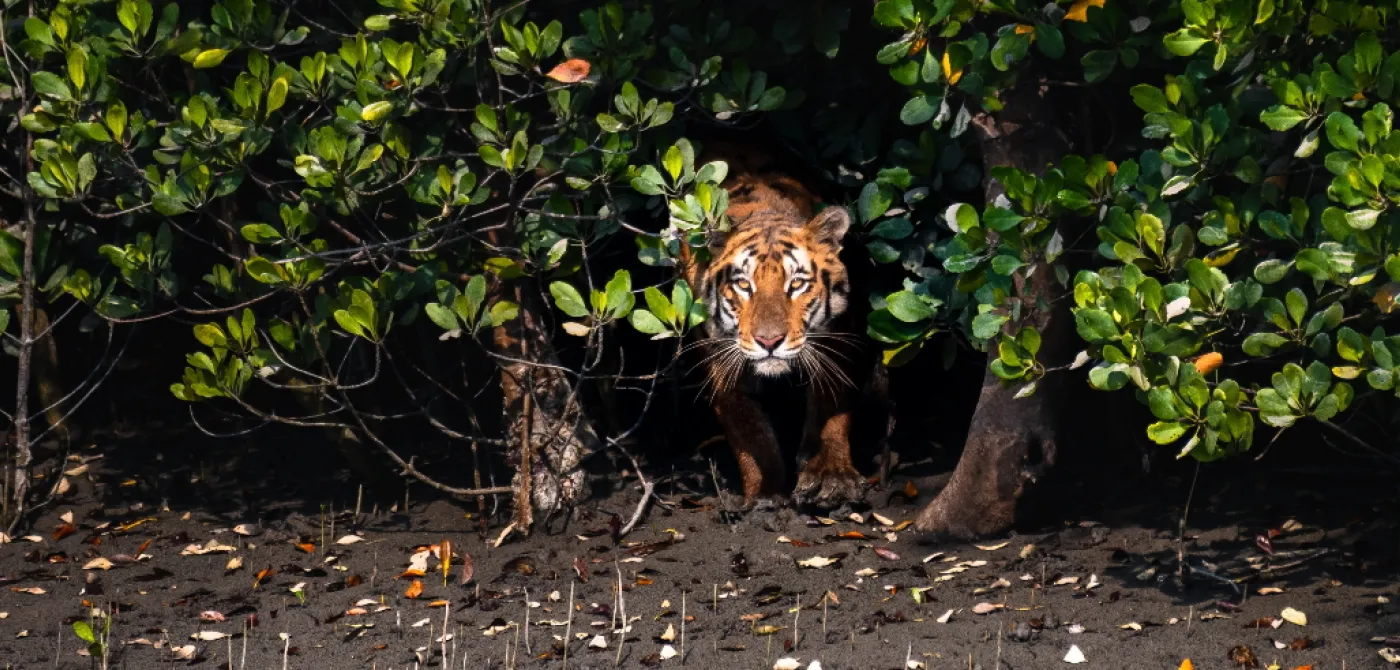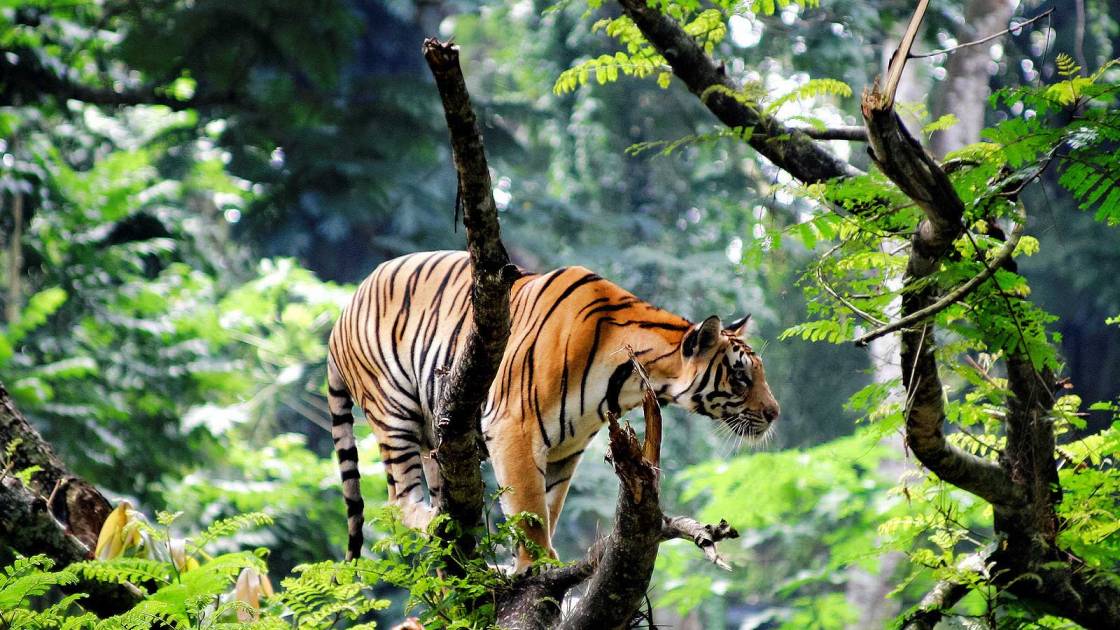Conservation Efforts in Sundarbans: The Sundarbans, a UNESCO World Heritage Site and one of the largest mangrove forests on the planet is a vital ecological treasure. Spanning over 10,000 square kilometres across India and Bangladesh, this unique ecosystem is home to an extraordinary array of wildlife, including the endangered Royal Bengal Tiger, estuarine crocodiles, Indian python, Gangetic dolphins, and a myriad of bird species. Beyond its status as a biodiversity hotspot, the Sundarbans also act as a natural barrier against coastal erosion and cyclones, protecting millions of people living in the surrounding regions. Let’s dive deeper into Conservation Efforts in Sundarbans.
Read More:
| Guided Tours vs. Self-Exploration |
| Medical Facilities in Sundarbans |
| Photography Tips for Sundarban Tours |
| Cultural Experiences in Sundarbans |
Despite its immense ecological importance, the Sundarbans face numerous threats due to human activities, climate change, and natural disasters. Over the past few decades, these challenges have led to the rapid degradation of the mangrove forest, threatening not only its wildlife but also the livelihoods of the communities that depend on the forest for sustenance. This blog explores the conservation efforts underway in the Sundarbans to protect and restore this precious ecosystem, focusing on the strategies, challenges, and successes in preserving its natural and cultural heritage.
1. The Importance of the Sundarbans Ecosystem
The Sundarbans is much more than just a forest; it is a complex and interconnected ecosystem that provides a wide range of services, both ecological and socio-economic. Understanding its importance is crucial to appreciating why conservation efforts in the Sundarbans are so critical. We can explore further details regarding Conservation Efforts in Sundarbans.
Biodiversity Hotspot
The Sundarbans is home to over 400 species of wildlife, including some of the most iconic and endangered animals on Earth. The Royal Bengal Tiger, which is the top predator in this ecosystem, relies on the mangrove forests for shelter and hunting. The estuarine crocodile, a keystone species, plays a vital role in maintaining the balance of the aquatic food chain. Additionally, the Sundarbans provide a habitat for various species of fish, reptiles, amphibians, and birds, many of which are endemic to the region.

Climate Regulation
Mangroves are known for their ability to sequester carbon dioxide, making them important carbon sinks. The Sundarbans, with its dense network of mangrove trees, play a significant role in mitigating climate change by absorbing carbon emissions. This helps in regulating the global climate and reducing the impact of global warming. Also, you can Book the Sundarban Tour At Maity Tourism and Sundarban Leisure Tourism Powered By Argusdna,
Natural Disaster Mitigation
One of the most critical functions of the Sundarbans is its role in protecting coastal communities from natural disasters, particularly cyclones and storm surges. The dense mangrove forests act as a buffer, reducing the force of winds and waves during storms. This protective barrier is essential for the survival of millions of people who live in the vulnerable coastal regions of West Bengal, India, and southern Bangladesh.
Livelihoods and Local Communities
The Sundarbans are also a source of livelihood for millions of people. Local communities depend on the forest for fishing, honey collection, and agriculture. The mangrove trees are also used for fuel and construction materials. Ensuring the sustainability of these resources is vital for the well-being of the people who rely on them.
2. Threats to the Sundarbans Ecosystem
Despite its importance, the Sundarbans are facing a growing number of threats that jeopardize their survival. Understanding these threats is crucial to formulating effective conservation strategies.

Climate Change
The Sundarbans are particularly vulnerable to the impacts of climate change, including rising sea levels, increased salinity in freshwater rivers, and more frequent and intense cyclones. These changes not only threaten the mangrove forests but also the livelihoods of local communities. As the sea encroaches on the land, many parts of the Sundarbans are slowly being submerged, leading to habitat loss for both humans and wildlife.
Deforestation and Habitat Loss
Deforestation is a major threat to the Sundarbans. Large areas of the forest have been cleared for agriculture, aquaculture, and urban development. Mangroves are often cut down for timber, and firewood, and to make way for shrimp farming, which has led to significant habitat loss. The shrinking of the forest directly affects the wildlife that depends on it, including the Royal Bengal Tiger, whose population has been steadily declining.
Pollution and Overfishing
Pollution from industrial activities, including oil spills, plastic waste, and agricultural runoff, is another significant threat to the Sundarbans ecosystem. The waterways that flow through the mangroves are becoming increasingly polluted, affecting both aquatic life and the health of the mangrove trees. Overfishing is also depleting fish populations, which are a critical food source for many species in the forest.
Human-Wildlife Conflict
As human populations expand into the Sundarbans, conflicts between humans and wildlife have become more frequent. Tigers, in particular, are often forced to venture into human settlements in search of food, leading to deadly encounters. This human-wildlife conflict not only threatens the survival of the tigers but also creates tension between conservationists and local communities.

3. Conservation Strategies in the Sundarbans
In response to the numerous threats facing the Sundarbans, both governments and non-governmental organizations (NGOs) have initiated a range of conservation efforts aimed at protecting and restoring the ecosystem. These strategies focus on preserving biodiversity, mitigating climate change impacts, and promoting sustainable livelihoods for local communities.
Protected Areas and Wildlife Sanctuaries
One of the key conservation strategies in the Sundarbans is the establishment of protected areas and wildlife sanctuaries. In India, the Sundarbans Tiger Reserve is one of the largest protected areas, covering around 2,585 square kilometres. In Bangladesh, the Sundarbans Reserved Forest is a protected area that spans approximately 6,000 square kilometres. These protected areas are designed to safeguard critical habitats for endangered species, particularly the Royal Bengal Tiger, and to prevent further deforestation.

In addition to these reserves, the Sundarbans are also home to several Ramsar sites, which are wetlands of international importance. These sites are crucial for maintaining the health of the mangrove ecosystem and protecting migratory bird species.
Community-Based Conservation Initiatives
Community-based conservation is a vital component of efforts to protect the Sundarbans. Local communities are often the first line of defence against illegal activities such as poaching, deforestation, and overfishing. NGOs and government agencies are working closely with these communities to promote sustainable practices that ensure the long-term health of the ecosystem while also providing economic benefits to residents.
One example of a successful community-based initiative is the Honey Collection Program. Honey collectors, known as “Mouals,” traditionally harvest honey from wild bees in the Sundarbans. However, unsustainable practices were leading to the destruction of bee colonies and the depletion of honey resources. Through education and training, honey collectors have been taught sustainable harvesting methods, which not only protect the bees but also improve the quality and quantity of honey produced.
Tiger Conservation Efforts
The Royal Bengal Tiger is perhaps the most iconic species in the Sundarbans, and its protection is a top priority for conservationists. Tiger conservation efforts in the Sundarbans include anti-poaching patrols, monitoring of tiger populations using camera traps, and the creation of “tiger corridors” that allow tigers to move freely between different parts of the forest.

In India, the National Tiger Conservation Authority (NTCA) has been instrumental in implementing Project Tiger, a nationwide effort to protect tiger habitats. In the Sundarbans, Project Tiger has helped to reduce poaching and improve the management of the tiger reserve. In Bangladesh, the Forest Department has implemented similar measures, including the use of drones to monitor tiger movements and detect illegal activities.
Mangrove Restoration Projects
Mangrove restoration is a critical aspect of conservation in the Sundarbans. Mangroves play a crucial role in stabilizing shorelines, preventing erosion, and protecting against storm surges. However, large areas of mangroves have been lost due to deforestation and rising sea levels.
To combat this, reforestation programs have been launched to plant new mangroves in degraded areas. These programs involve local communities, who are trained in the techniques of mangrove planting and maintenance. NGOs like the World Wildlife Fund (WWF) and the International Union for Conservation of Nature (IUCN) have been leading efforts to restore mangrove ecosystems in both India and Bangladesh.

Climate Adaptation Strategies
Given the Sundarbans’ vulnerability to climate change, many conservation efforts are focused on helping the ecosystem and local communities adapt to the changing climate. These strategies include building more resilient infrastructure, such as cyclone shelters and embankments, to protect against rising sea levels and storm surges.
In addition, programs have been developed to diversify livelihoods for local communities, reducing their dependence on the forest for resources. This includes promoting eco-tourism, which provides an alternative source of income while raising awareness about the importance of conservation.
4. Successes and Ongoing Challenges
While conservation efforts in the Sundarbans have achieved notable successes, challenges remain. The Royal Bengal Tiger population, for example, has stabilized in recent years, thanks to anti-poaching measures and improved habitat protection. Mangrove restoration projects have successfully reforested large areas of degraded land, providing critical habitats for wildlife and strengthening coastal defences against storms.
However, the battle is far from over. Climate change continues to pose a serious threat to the Sundarbans, with rising sea levels threatening to submerge large portions of the forest. Human-wildlife conflict remains a challenge, particularly as human populations encroach further into tiger territory. Pollution and unsustainable resource extraction also continue to degrade the ecosystem, despite efforts to promote sustainable practices.
Conclusion: Conservation Efforts in Sundarbans
The Sundarbans is a unique and irreplaceable ecosystem that provides critical ecological services and supports millions of people and countless species
